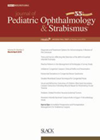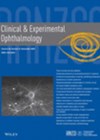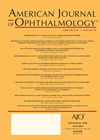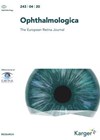
Journal Reviews archive for 2021
Mobile phone use with esotropia development
This study analysed clinical characteristics and surgical outcomes in patients with acquired comitant esotropia (ACET) and determined the prevalence of excessive mobile touch screen device use in these patients. This was a retrospective study of 35 patients of which three...
Greater accuracy of cycloplegic refraction
The authors conducted this study on 5320 pre-school (four to six-year-old) and 6475 school (seven to ten years) children to compare the results of final glasses prescription based on cycloplegic refraction with atropine to those of non-cycloplegic refraction. For younger...
IOL effect on refraction
The authors aimed to evaluate the effect of age at primary intraocular lens (IOL) implantation on the rate of refractive growth during childhood. This was a retrospective study of 296 eyes of 219 patients. Forty-six met inclusion criteria; 28 unilateral...
ROP screening criteria
This study aimed to describe a process of identifying birth weight and gestational age screening guidelines in Mongolia using telemedicine for retinopathy of prematurity (ROP) screening. This was a single centre prospective study collecting data from December 2016 to January...
Outcomes of early versus late surgery for infantile esotropia
The authors aimed to provide a better understanding of the clinical spectrum of infantile esotropia by comparing motor and sensory results in the long-term follow-up of patients who underwent surgery. This was a retrospective review over a 17-year period. There...
Surgical outcomes of isolated medial rectus palsy
Isolated medial rectus is a rare clinical entity. This prospective study of 32 patients from China showed that this was caused most commonly by iatrogenic injury (43.75%), trauma (37.50%) and congenital (18.75%) causes. An average of 60 ±25 prism dioptres...
Efficacy of cyclo 1% spray
The aim of this study was to evaluate the efficacy and tolerability of cyclopentolate 1% spray in patients aged three to six years. This was a cross section parallel group study of 61 children. Thirty-one received cyclo 1% drops and...
Risk of CNV related to angioid streaks in PXE
This retrospective cross-sectional study investigated 301 patients with pseudoxanthoma elasticum (PXE) for prevalence of choroidal neovascularisation (CNV) and macular atrophy. Some patients were excluded due to missing or poor-quality imaging or the fact that they didn’t have angioid streaks, leaving...
Correlation between aqueous flare and macular microvascular status in diabetes mellitus
The authors report a cross-sectional study which was conducted to investigate the correlation between aqueous flare and macular microvascular status, assessed by optic coherence tomography angiography (OCTA) in diabetes mellitus. Fifty-two diabetic patients with non-proliferative retinopathy, 44 diabetic patients without...
Assessment of retinal capillary VD and FAZ area in CSC using OCTA
The authors aim to report a cross-sectional, case controlled study, the purpose of which was to access the retinal capillary vessel density (VD) and foveal avascular zone (FAZ) area in acute and chronic central serous chorioretinopathy (CSC) patients compared to...
Characteristics of Charles Bonnet syndrome in patients with neovascular AMD
This retrospective cross-sectional study aimed to characterise various aspects of Charles Bonnet syndrome hallucinations among patients with neovascular age-related macular degeneration (AMD). Five hundred and ten consecutive patients were asked a screening question to determine if they had ever suffered...
Changes in drusen and retinal layer volumes prior to CNV development
This retrospective longitudinal study looked at patients with wet age-related macular degeneration (AMD) in one eye who subsequently developed wet AMD in the fellow eye. The aim was to discover whether drusen characteristics or volumes of retinal layers correlate with...









